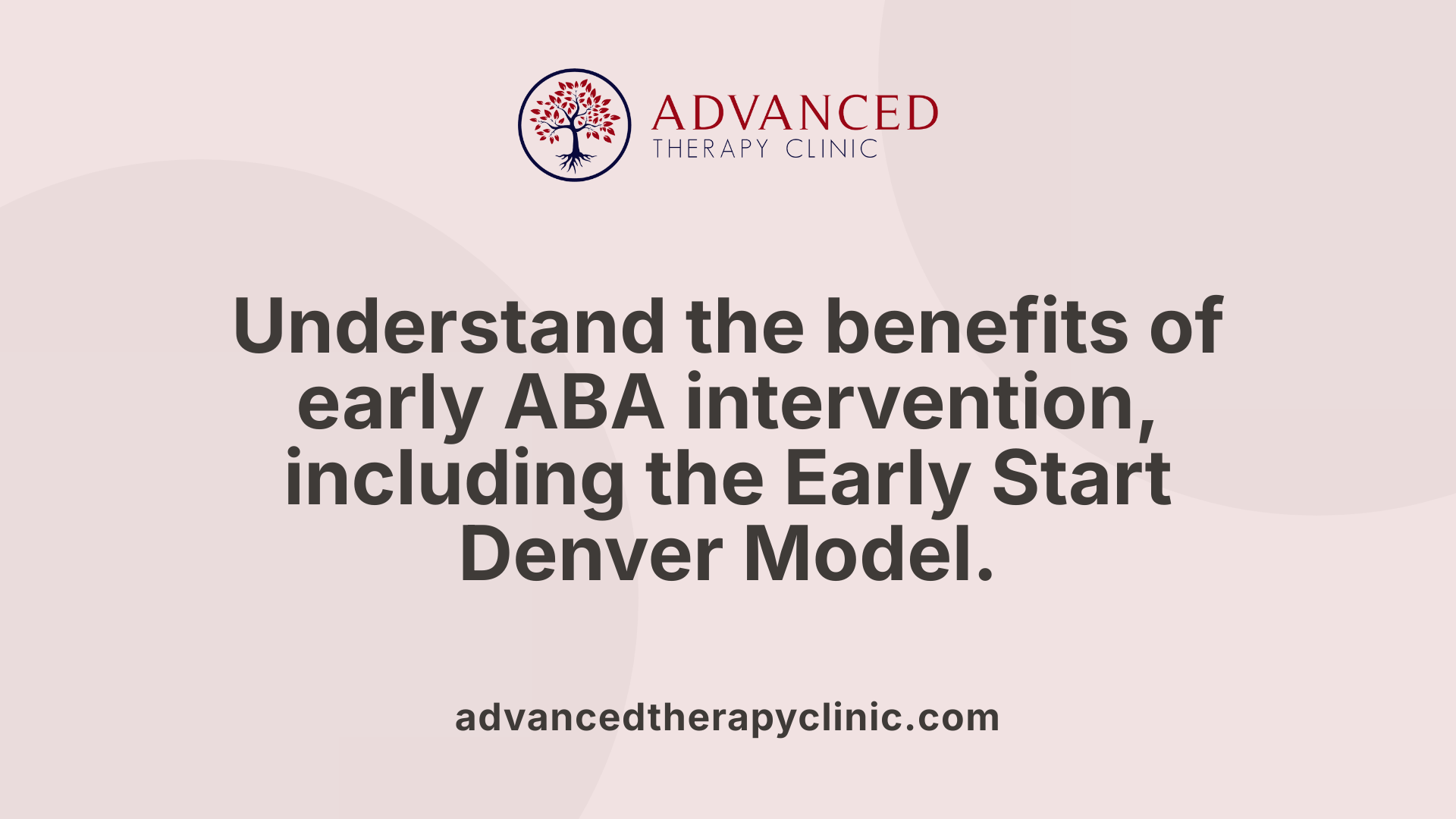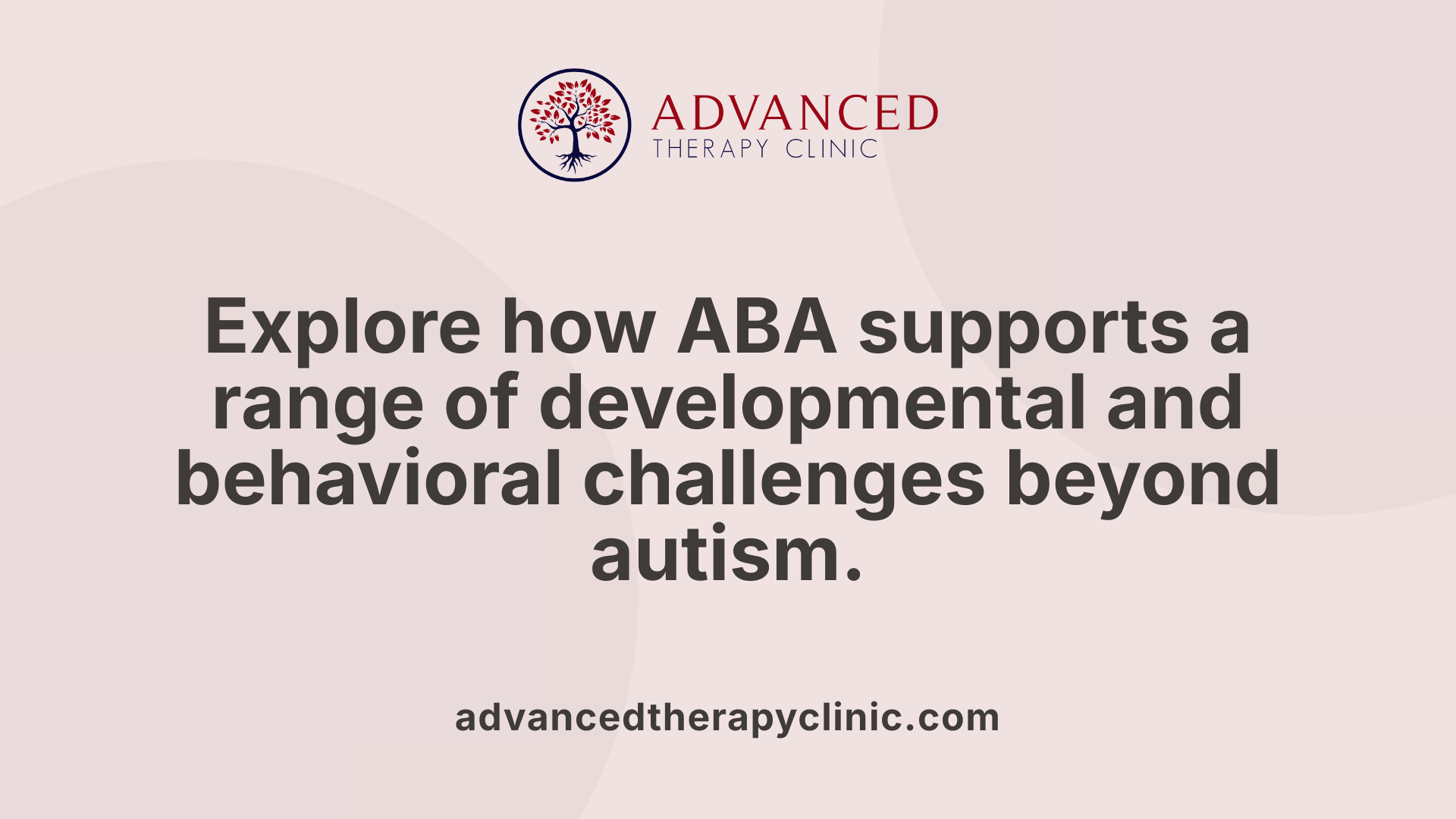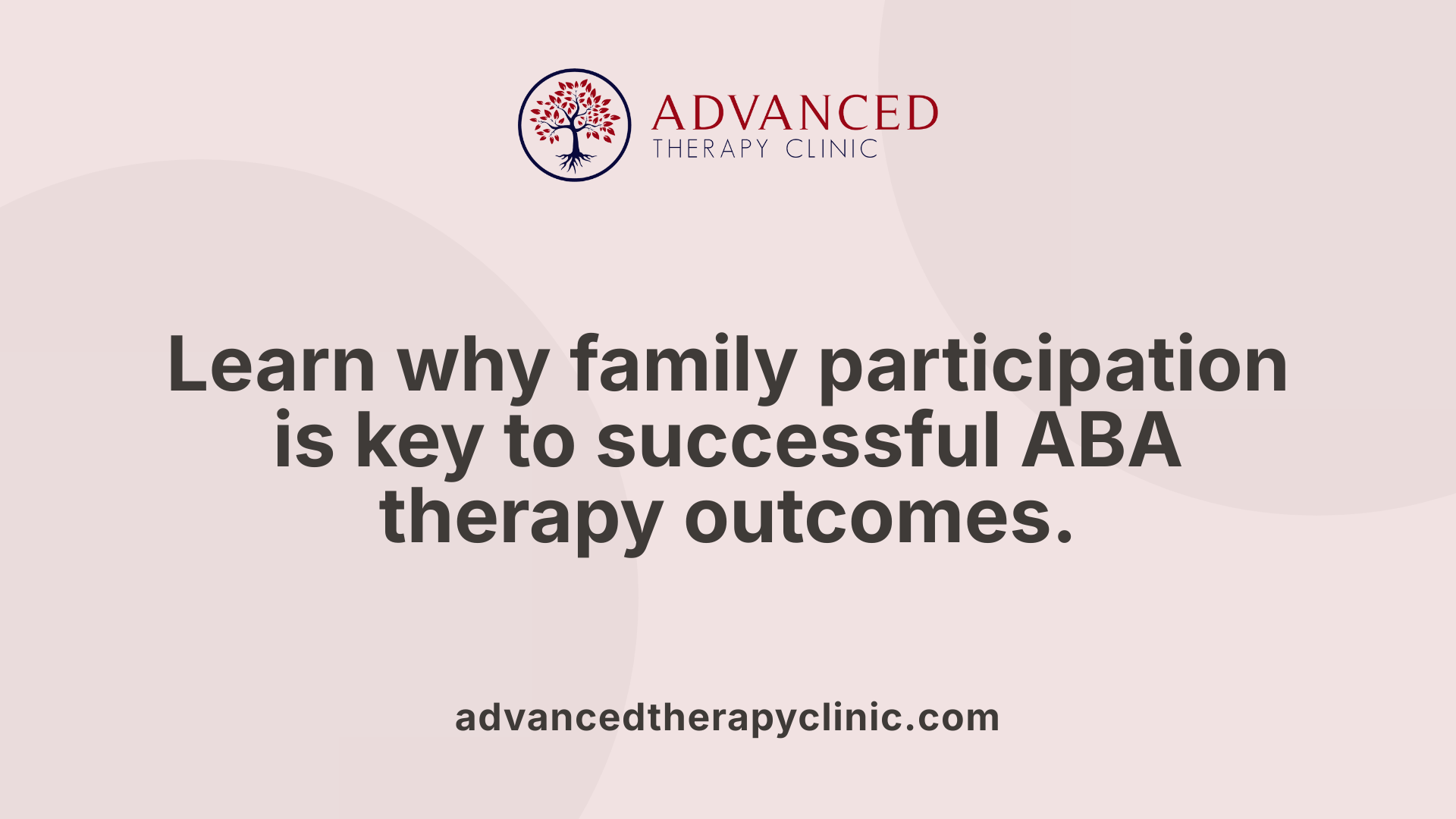Aba Therapy Age Limit


Understanding ABA Therapy and Its Age-Related Scope
Applied Behavior Analysis (ABA) therapy is a cornerstone intervention technique widely used to support individuals with Autism Spectrum Disorder (ASD) and other developmental challenges. While ABA therapy is often associated with young children, its applicability spans a broad age range, tailored to developmental needs and therapeutic goals. This article explores the age considerations, therapy initiation criteria, and the importance of early intervention, highlighting how ABA therapy adapts for individuals across the lifespan.
Optimal Timing for ABA Therapy: Why Early Years Matter
What is the optimal age range for starting ABA therapy?
The ideal age for beginning Applied Behavior Analysis (ABA) therapy is during the early developmental years, specifically between 2 and 6 years old. This period capitalizes on a critical window of brain development in young children, allowing ABA to be most effective in fostering essential skills.
Why is early intervention important for children with Autism?
Early intervention is crucial because it leads to significant positive outcomes for children with Autism Spectrum Disorder (ASD). Starting ABA therapy early can improve language development, enhance adaptive behaviors, and strengthen social skills, which are foundational for a child’s growth and future learning.
What developmental milestones does ABA target in early therapy?
ABA therapy focuses on foundational developmental milestones such as social communication skills—like eye contact, babbling, gestures, and responsive interaction. The Early Start Denver Model (ESDM), which is built on ABA principles, even supports interventions starting as young as 6 months to 15 months of age. Targeting these milestones early helps improve communication and social responsiveness, often reducing the need for further intervention by age 2.
By emphasizing the early years, ABA therapy maximizes developmental progress, helping children build critical skills that serve as a base for lifelong learning and adaptation.
Initiating ABA Therapy: Minimum Age and Early Start Denver Model

At what earliest age can ABA interventions be effectively used?
ABA interventions can begin as early as 6 months to 15 months of age. Starting therapy during this window takes advantage of critical periods in early brain development. Remarkably, some children who receive early ABA intervention might not even require further diagnosis or additional treatments by the age of 2, indicating the profound impact of early support.
What is the Early Start Denver Model and how does it integrate with ABA?
The Early Start Denver Model (ESDM) is a specialized therapy rooted in ABA principles, designed explicitly for infants and toddlers. This model targets enhancing social communication skills critical for early development, such as encouraging eye contact, babbling, using gestures, and promoting responsive back-and-forth interactions.
Focus on social communication skills
ESDM integrates naturally with ABA by emphasizing developmental milestones that foster effective social engagement. Through play and naturalistic teaching methods, children are guided to develop foundational communication abilities. These early interactions set the stage for later gains in language, social responsiveness, and adaptive functioning.
Together, initiating ABA as early as 6 months using approaches like ESDM leverages neuroplasticity, helping children with autism or developmental delays build essential social communication skills from infancy.
ABA Therapy Across All Ages: Flexibility and Continued Benefits
Can ABA principles be applied to older individuals?
Yes, Applied Behavior Analysis (ABA) therapy is not just for young children. The principles of ABA can be effectively utilized with individuals across all ages. Whether for adolescents or adults, ABA techniques address behavioral challenges like aggression, self-injury, and tantrums by identifying triggers and teaching positive replacement behaviors. This flexibility allows ABA to improve quality of life well beyond early childhood.
What are the typical duration and intensity patterns for ABA therapy across different age groups?
ABA therapy is adaptable in both duration and intensity depending on the age and needs of the individual. For young children, especially those between birth and seven years, comprehensive ABA therapy is recommended. This often involves 10 to 25 hours a week of intervention, typically lasting 1 to 2 years, providing intensive early support.
For individuals of any age beyond early childhood, focused ABA therapy is available. This approach tends to be less intensive, ranging from 1 to 20 hours weekly with treatment durations spanning 1 to 4 years. Such flexibility ensures personalized intervention that fits the specific behavioral goals and life circumstances of older individuals.
Addressing behavioral challenges at any age
ABA therapy targets and reduces challenging behaviors at all stages of life. With tools like Functional Behavior Assessments (FBA), therapists pinpoint what triggers unwanted behaviors and develop customized plans to replace these with functional, positive skills. This process benefits individuals whether they are young children or adults, emphasizing that ABA remains a valuable tool regardless of age.
These variations in therapy intensity and duration reflect ABA's versatility, allowing it to serve a wide range of needs across the lifespan effectively.
Eligibility Criteria and Medical Necessity for ABA Therapy
What diagnosis is required before initiating ABA therapy?
ABA therapy requires a formal diagnosis of Autism Spectrum Disorder (ASD) made by a qualified healthcare professional. This diagnosis is essential to access services and ensure that the therapy is appropriately targeted to the individual's needs.
What are the medical necessity criteria for ABA initiation?
To begin ABA therapy, medical necessity must be documented. This involves demonstrating functional impairment through standardized evaluation tools such as the Vineland Adaptive Behavior Scales or the ABAS (Adaptive Behavior Assessment System). Impairment should be at least one standard deviation below the population mean or indicate a significant risk of harm without intervention.
Who is qualified to provide or oversee ABA therapy?
ABA services must be provided or billed by licensed behavior analysts, board-certified behavior analysts (BCBAs), or licensed psychologists. When therapy is delivered by non-licensed providers, licensed supervision is mandatory to maintain clinical integrity and safety.
This structured approach ensures that ABA therapy is medically justified, professionally managed, and tailored to support individuals with ASD effectively.
The Role of Assessment and Treatment Planning in ABA Therapy

How are behavioral challenges assessed before and during ABA therapy?
Behavioral challenges are evaluated primarily through Functional Behavior Assessments (FBAs). FBAs help identify specific triggers for behaviors and provide detailed insights into why they occur. This information is critical for crafting individualized treatment plans that effectively address the unique needs of each person undergoing ABA therapy.
What elements are essential in an ABA treatment plan?
An effective ABA treatment plan includes several core components:
- Target Behaviors: Clear identification of behavioral goals.
- Intervention Techniques: Specific strategies and methods to encourage positive behaviors and reduce challenges.
- Reinforcers: Motivational tools to reward progress and encourage continued improvement.
- Generalization Strategies: Plans to ensure skills and behaviors are maintained in various settings beyond therapy.
Family involvement and coordination with other healthcare providers are indispensable parts of the planning process. Engaging caregivers ensures consistency between therapy and home life, increasing the chance of success. Collaboration with other professionals enhances comprehensive care.
Family and provider coordination
Successful ABA therapy depends heavily on active participation from families and caregivers, who receive training to apply techniques consistently. Providers work alongside families and other specialists to share goals and monitor progress, creating a support network centered on the individual's well-being.
This collaborative and systematic approach to assessment and treatment planning ensures that ABA therapy is personalized, comprehensive, and effective across diverse needs.
Monitoring Progress and Reevaluation: Ensuring Effective ABA Therapy
How is progress monitored during ABA therapy?
Progress in ABA therapy is closely tracked through systematic data collection and analysis. Behavior analysts gather detailed information on skill acquisition, behavior changes, and response to interventions. This ongoing monitoring allows therapists to tailor strategies, ensuring treatment remains effective and adjustments are made as needed to support lasting benefits.
How often must ABA therapy be reevaluated to maintain coverage?
ABA therapy requires formal reevaluation every six months to maintain insurance coverage. These assessments demonstrate the individual's response to the intervention, guide modifications to the treatment plan, and facilitate planning for either tapering services or transitioning to other supports. Reevaluations also confirm that medical necessity continues to be met.
When does insurance coverage for ABA therapy typically end?
Insurance coverage usually concludes when the medical necessity criteria are no longer fulfilled or when substantial improvement is observed. This means that if functional impairments have been sufficiently addressed or the individual no longer shows significant benefit from ABA, coverage can be discontinued. Continuous reassessment ensures that services remain appropriate to the individual's needs.
Insurance and Coverage: Navigating Access to ABA Therapy

What behavioral health services does Medi-Cal cover for eligible individuals?
Medi-Cal provides comprehensive coverage for medically necessary behavioral health treatment (BHT) services for individuals under 21 years of age. These services include Applied Behavioral Analysis (ABA) therapy and other evidence-based interventions designed to support children with Autism Spectrum Disorder (ASD) and other developmental challenges.
Who determines medical necessity and refers children for ABA under Medi-Cal?
Only qualified health professionals such as physicians or psychologists can determine the medical necessity of BHT services. These professionals are responsible for making referrals to ensure that children eligible for ABA therapy receive appropriate care based on clinical assessments and criteria.
What changes are coming to Medi-Cal coverage for ABA services starting July 1, 2025?
Beginning July 1, 2025, children enrolled in fee-for-service Medi-Cal will have the option to receive Behavioral Health Treatment from Medi-Cal Qualified Autism Service (QAS) providers. This change will enable families to access specialized ABA services directly from approved QAS providers rather than through local Regional Centers, expanding options and potentially streamlining access to care.
This evolving landscape of coverage aims to improve service delivery and ensure that children with ASD receive timely and appropriate interventions tailored to their needs.
Beyond Autism: ABA Therapy for Other Developmental and Behavioral Challenges

Is ABA therapy limited to individuals with Autism Spectrum Disorder?
No, Applied Behavior Analysis (ABA) therapy is not exclusive to individuals with Autism Spectrum Disorder (ASD). It is also widely used to help those with other developmental disabilities, intellectual disabilities, and behavioral challenges. This broad applicability makes ABA a versatile therapeutic approach tailored to various needs beyond autism.
What types of behavioral challenges can ABA address?
ABA therapy is effective in tackling a variety of behavioral challenges. These often include aggression, self-injurious behaviors, tantrums, and other disruptive acts. The therapy works by identifying the triggers behind such behaviors through assessments like Functional Behavior Assessments (FBA) and aims to replace negative behaviors with positive, adaptive alternatives.
Use of ABA for non-ASD conditions
For individuals without ASD, ABA is customized to focus on skill development and behavior management that fit their specific developmental or intellectual challenges. Licensed behavior analysts design individualized treatment plans that emphasize improving quality of life and functional independence.
Range of target behaviors
ABA targets a wide range of behaviors, from enhancing communication and social skills to reducing harmful or challenging behaviors. The interventions are grounded in data monitoring, allowing ongoing adjustments to suit progress and evolving needs.
Behavioral challenges addressed
Commonly addressed behavioral challenges through ABA include not only aggression and self-injury but also difficulties with attention, compliance, and emotional regulation. By understanding the root causes and employing reinforcement strategies, ABA helps individuals develop healthier coping mechanisms and everyday skills.
This adaptability and focus on individualized treatment make ABA a valuable option for many people facing various developmental and behavioral concerns.
Family Involvement and Therapeutic Success in ABA Therapy

Why is family involvement crucial in ABA therapy?
Family and caregiver participation plays an essential role in the success of ABA therapy. Because these therapies often require consistent application throughout daily routines, active involvement by caregivers helps reinforce the skills and behaviors targeted during sessions. This continuous reinforcement at home ensures learned behaviors generalize beyond therapy settings and become integrated parts of the child's life.
How does training and consistency at home affect therapy?
Providing caregivers with training on ABA techniques equips them to effectively support their child's development. Caregivers learn to recognize behavioral triggers, understand intervention strategies, and apply reinforcement methods appropriately. Consistency at home enables children to practice new social, communication, and adaptive skills regularly, which accelerates progress and helps maintain improvements over time.
What impact does family involvement have on treatment outcomes?
Research and clinical experience indicate that treatment outcomes improve significantly when families are involved. Children show greater gains in language, social skills, and adaptive behaviors when parents and caregivers actively participate. Involving families also facilitates better coordination with professionals, allowing therapy plans to adapt fluidly to the child's evolving needs and environments, maximizing the therapy's overall effectiveness.
Concluding Insights on ABA Therapy Age Limits and Accessibility
ABA therapy is a versatile and evidence-based approach that adapts to the needs of individuals across a wide age spectrum. While the early years, especially between ages 2 and 6, represent the optimal window for intervention yielding the greatest developmental gains, ABA principles remain valuable throughout life. Access to therapy hinges on proper diagnosis, medical necessity, and qualified providers, with family involvement and periodic monitoring essential for sustained progress. Emerging policy shifts such as those in Medi-Cal reflect ongoing efforts to improve access and support for individuals with Autism and related conditions. Ultimately, ABA therapy’s flexible age range underscores its role as a lifelong tool for fostering positive behavioral and developmental outcomes.
References
Recent articles

The Benefits of ABA Therapy for Sibling Relationships and Family Bonds
Strengthening Family Ties Through Applied Behavior Analysis

How Speech Therapy Assists with Improving Verbal and Nonverbal Communication
Unlocking Communication Potential: The Role of Speech Therapy

Supporting Autism During Transitions
Strategies and Therapies to Navigate Transitions for Children with Autism

Low-Functioning Autism
Understanding Support and Therapies for Autism Spectrum Disorder Level 3

How Speech Devices Enhance Communication for Nonverbal Children
Transforming Communication: The Role of Speech Devices for Nonverbal Children

TEACCH Method For Autism
Comprehensive Therapeutic Approaches for Autism Spectrum Disorder


